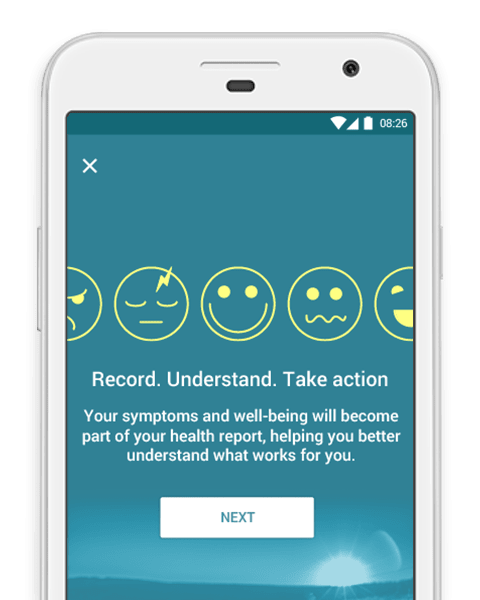When considering the limitations imposed upon her by Ehlers-Danlos Syndrome (EDS), 21-year-old Eilidh MacDonald jokes that she behaves in a more middle-aged manner than her parents. However, standing up to the challenges posed by EDS have also taught her a few life lessons, resulting in wisdom that is similarly beyond her years. Ehlers-Danlos Syndrome is one of the rare diseases – of which there are some 8,000 – that roughly 3.5 million people in the UK live with, and often comes with a plethora of symptoms and related conditions. In doing her part to help raise awareness of the condition, Eilidh has been kind enough to share her story on the blog, and in doing so shares with us some of the insights life with EDS has taught her.
A guest post by Eilidh MacDonald
Twenty-One Going on Fifty…
Twenty-one. This is an age synonymous with many things: freedom, independence, socialising, and just generally having a fabulous care-free time. However, it would seem my body has a different path planned out for me. It’s a running joke in my family that I am more typically middle-aged than my fifty-something-year-old parents. Yet, with all things considered, it’s more of a reality than a joke.
My name is Eilidh and I have Ehlers-Danlos Syndrome. NHS Choices describes EDS as, “a group of rare inherited conditions that affect connective tissue.” Now, unfortunately for those of us with EDS, connective tissue is essentially the cement that glues our body together. Consequently, it can cause a variety of symptoms that include but are not limited to: joint hypermobility/instability, a range of digestive disorders, fatigue, bladder dysfunction, and cardiovascular complications. These can all manifest themselves in different ways and can be dependent on the form of EDS that you have.
I have hypermobile EDS (hEDS) – which is the most common type – with a few elements of classical EDS (cEDS) thrown in… lucky me. My diagnosis came in 2016 after spending nearly half a year as an inpatient in hospital. This lengthy stay came after my body more-or-less lost the ability to process food or liquids without causing me to vomit continuously. Yet, little did I know at the time, my colourful medical history had pointed towards EDS long before this.
Dealing with the Symptoms of EDS
Over the past two years, the vomiting has become my most challenging symptom to manage, and my nasojejunal (NJ) feeding tube has become my most trusty companion. However, this is not the only day-to-day challenge that has emerged. I have been diagnosed with a cluster of conditions, including tachycardia, complex functional bowel disease, post-viral fatigue syndrome and multiple unstable joints. Additionally, I have developed several allergies to medications such as painkillers and anti-sickness drugs which, when considering my symptoms, is far from ideal. On the plus side, I don’t need to splurge on expensive moisturisers – EDS has left me with naturally velvety soft skin – so who is the real winner?
As I mentioned already, I am dependent on an NJ feeding tube, meaning that I rely on it to keep me hydrated and provide me with all my nutrition. The tube itself is very thin and travels approximately 1.2 metres through my body into my jejunum – which is the second part of your small bowel. When I was first told that I was going to need a feeding tube I thought of it as a massive step back in terms of my health. However, I wish I had had someone to tell me what a positive influence it would have on my life.
Nowadays, bizarrely, I have grown rather attached to my tube. Yes, it is a hassle going into hospital every couple of weeks to have it replaced, but it grants me a quality of life that would be impossible to attain otherwise. Two years ago – during my extended hospital admission – I could never have imagined being able to build up my strength back up to a point where I would be able to go back to university and finish my degree. Yet, here I am.
Of course, the tube makes my condition visible. There are both positives and negatives to this. It can attract inquisitive stares and pity-filled smiles; however, you get used to that. I have learnt that these are nothing to be embarrassed of and, if anything, the tube proves to be a good conversation starter. I have no problems with people asking me what it is and how it works. In fact, I would far rather someone ask me about the tube as opposed to making their own assumptions.
Other posts you may be interested in on the MyTherapy blog:
- Ehlers-Danlos Syndrome: My Battle with a Rare Disease
- Living with an Invisible Illness: 6 People Share the Realities of Daily Life
EDS: Not Defined by Visibility
Ironically, another positive that the tube brings is it seems to ‘legitimise’ my condition to many people. Unfortunately, this is a sad reflection on how our society broadly treats people living with invisible illnesses. While I have had my tube inserted, not once have I been met with suspicion when purchasing an accessible ticket for an event nor heard a disapproving ‘tut’ as I go into a disabled toilet. Yet, during the times that I have been without a tube, or indeed had a PEG-J (a feeding tube inserted directly into your stomach and is hidden from plain sight), I have repeatedly had to fight to prove the validity of EDS.
For example, Halloween 2016, when I was waiting in McDonald’s as my friends indulged in a midnight snack. This was at a time when I had my PEG-J inserted and had niftily managed to incorporate it into my Halloween costume; I went as a ghostbuster with my feeding rucksack acting as a the all-important ‘proton pack’. However, when I asked the attendant for a key to the disabled toilet I was told I could not get it as I was not disabled. I laughed along, assuming that the man was merely playing along with my outfit. However, it became apparent that it was not a joke. To cut a long story short, I ended up having to open my top to prove that the tube was connected to my stomach and that I was indeed ‘disabled’.
It goes without saying, this was a very degrading experience and unfortunately, it is not a one-off.
I do not want to seem overly pessimistic, but it is important to raise awareness that discrimination like this continues to exist. My feeding tube does not define my condition, without it I continue to suffer from my lengthily list of symptoms. Being disabled does not necessarily mean being in a wheelchair or having a visible impairment. There are many debilitating conditions that carry no visible symptoms but greatly impact a person’s life.
The Upside…
On a more positive note, being ill has not been all doom and gloom. Through intense emotional blackmail, I managed to convince my parents that it was a great idea to give in to a lifelong dream of mine. Cue the arrival of my trusty canine companion – Mac. I was lucky that we were in the situation where we were able to welcome a dog into our home, but Mac has truly lit up the past couple of years for me. Not only has he provided an infinite number of cuddles on the days that I have needed them most, but he has helped me to regain my strength by motivating me to get out and walk with him when possible.
On top of that, I learnt more about myself in the past two years than I had in the previous nineteen. Without sounding patronising or clichéd, I have a newfound respect for life and its fragility; something that I don’t think many people learn until they are much older. Of course, everyone, myself included, always wants to live facing as few hurdles as possible, but life doesn’t always go your way. What is important that you try and make the best of whatever circumstances you are faced with.
This does not mean that I am positive 24/7. Of course, I have my days when I get upset and feel that EDS is controlling my life. However, in turn, it is this that makes me appreciate things in life that I would not otherwise. Ironically, my illness has made me a far less stressed person. Life really is too short to spend days stressing about an essay that realistically only accounts for a tiny fraction of your degree. While I may not be able to control certain aspects of my life, I can make sure that I focus on doing things that make me happy.
Finally, EDS has taught me the value of being surrounded by your loved ones.
I truly believe that you can only be as strong as those around you. Personally, I think it is far more difficult to watch somebody that you are close to deal with pain as opposed to dealing with it yourself. Being ill can be a very isolating experience and this is why I am so appreciative of the fact that I have the most caring family and friends who provide me with endless love, support and understanding. Moreover, they bend over backwards to ensure that we can all do activities that do not involve food/drink (…which is harder than it sounds) and that I can therefore be included in. Those around me are the real stars of this story. Without their encouragement and kindness, I know that I would not be in as nearly as good a place as I am today.
Life with EDS: What the Future Holds
Living with EDS is neither easy nor glamorous but, to be blunt, for those of us with it there is no alternative. Hopefully as awareness of the illness grows and more research is done, discoveries will be made that will greatly help increase the treatment options out there. It would be great to be able to tackle the underlying causes of the condition and not just treat it symptomatically.
However, for now, I continue to take each day as it comes, and I am thankful that I can confidently say that I am ready for whatever the future throws at me.
We would like to thank Eilidh for sharing her story with us.
If you would like your story featured on the MyTherapy blog, contact Dan here.



